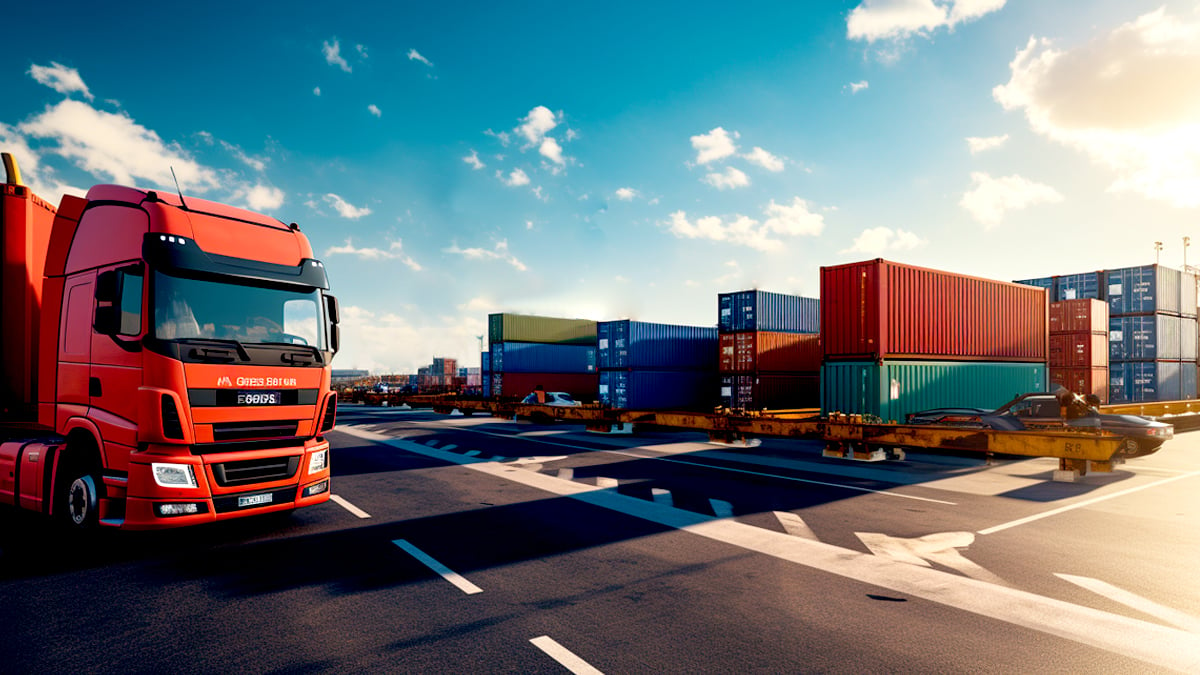Table of contents
When planning to ship products to Vietnam, you need to choose the best mode of transport according to your needs. Vietnam is a fast-growing market for many businesses. But shipping to Vietnam is complicated. You may face many challenges, such as distance, customs, rules, and infrastructure. The way you ship your products has a significant impact on your business’s performance.
In this article, we will explore the two most commonly used shipping options for your shipping needs, and discuss which can be more efficient for your specific needs.
Understanding the modes of shipping to Vietnam
Vietnam has a strategic location in the heart of Southeast Asia, with a good shipping infrastructure that includes seaports, airports, and land transportation routes. The country’s major ports like Hai Phong, Da Nang, and the largest, Cat Lai (Ho Chi Minh City), serve as crucial gateways for cargo. Major airports include Noi Bai in Hanoi and Tan Son Nhat in Ho Chi Minh City.
Ocean Freight to Vietnam: A Cost-Effective Option
Vietnam’s coastline stretches over 3,400 kilometers, and it’s dotted with several major ports. It also set up international gateway ports in the north and south of the country, connecting to 34 shipping routes across the world. These routes include 11 in Asia, three to Europe, and 20 to America, making Vietnam one of the top maritime hubs in the region, behind only Malaysia and Singapore.
Understanding ocean freight timelines to Vietnam
Here is a comprehensive chart that outlines the estimated transit times for ocean freight shipments to Vietnam from various major ports worldwide.
| Country of Origin | Port of Origin | Destination Port | Estimated Transit Time |
| Australia | Adelaide, Brisbane, Melbourne, Perth, Sydney | Ho Chi Minh City, Haiphong | 17 – 28 days |
| Canada | Toronto, Vancouver | Ho Chi Minh City | 28 – 56 days |
| USA | New York, Chicago, Seattle, Oakland, Los Angeles, Long Beach, San Francisco | Ho Chi Minh City, Haiphong, Da Nang | 29 – 57 days |
| UK | Felixstowe | Ho Chi Minh City | 32 days |
| Spain | Valencia | Haiphong | 31 days |
| Italy | Genoa | Ho Chi Minh City | 27 days |
| France | La Havre | Ho Chi Minh City | 29 days |
| Germany | Hamburg | Haiphong | 36 days |
Major Sea Ports in Vietnam
Some of the major sea ports in Vietnam include:
Port of Hai Phong: The largest port in North Vietnam, handling a variety of goods including manufacturing equipment, agricultural products, and textiles. This port is ideal for businesses involved in heavy industry and agriculture due to its capacity and proximity to Northern Vietnamese markets. It has a capacity of receiving 10 million MT of cargo annually.
Port of Da Nang: Crucial for shipping in and out of Central Vietnam, it facilitates various cargo types, making it a favorable choice for businesses with diverse product lines. The port connects Central Vietnam to Thailand and Singapore through maritime ship routes and trading channels.
Port of Ho Chi Minh City: Situated in Vietnam’s business hub, this port caters to Southern Vietnamese markets and is suitable for businesses dealing in electronics, textiles, and consumer goods, among others.
Port of Cai Mep: This deep-sea port allows the docking of large vessels, making it an attractive option for businesses dealing in heavy machinery or other large-scale commodities. Due to its deepwater capabilities, it is one of the most favored ports by Australian and US freight liners.
When is ocean freight the right choice for shipping to Vietnam?
Ocean freight is the most economical way to ship your goods to Vietnam. Especially if you are transporting bulky, or low-value goods that do not need urgent delivery. The transit time of ocean shipping can vary significantly depending on the distance, route, weather, and congestion of the ports. Ocean freight also has more risks of damage, or loss of your goods during the long journey.
Let’s consider a European automobile manufacturer dealing with car parts and their imports to Vietnam, where the automotive industry is steadily growing. Given the bulky nature of their cargo and the lower urgency compared to perishable goods or high-tech components, sea freight would be a more economical choice for this business.
Air Shipping to Vietnam: A Faster Option
Air freight is the fastest and most convenient way to ship goods to Vietnam which is well-suited for time-sensitive shipments. With its 22 airports, 10 of which are international, goods can reach from a major international airport to one of Vietnam’s main airports in just one to eight days. This makes air freight the ideal option for transporting time-sensitive goods.
Understanding air freight timelines to Vietnam
The following table presents an overview of the estimated transit times when shipping goods by air freight to Vietnam.
| Country of Origin | Airport of Origin | Destination Airport | Estimated Transit Time |
| Australia | Brisbane, Melbourne, Perth, Sydney | Ho Chi Minh City, Hanoi | 1 – 8 days |
| Germany | Frankfurt, Hamburg, Berlin | Ho Chi Minh City, Hanoi | 4 – 5 days |
| USA | Dallas, Los Angeles, Atlanta, Houston, Chicago, San Francisco, Newyork | Ho Chi Minh City, Haiphong | 5 – 8 days |
| UK | London, Glasgow | Ho Chi Minh City, Hanoi | 3 days |
| Italy | Rome | Hanoi | 4 days |
| Portugal | Lisbon | Hanoi | 4 days |
| Switzerland | Zurich, Basel, Geneva | Ho Chi Minh City, Hanoi | 5 – 8 days |
Major Airports in Vietnam
Vietnam’s air transport infrastructure has the following two international air transport hubs:
Noi Bai International Airport: Located in Hanoi, it connects Northern Vietnam with international markets. Ideal for businesses dealing in high-value or time-sensitive goods, such as electronics, pharmaceuticals, or fashion items.
Tan Son Nhat International Airport: Serving Ho Chi Minh City, this is the busiest airport in Vietnam. It serves as an excellent choice for businesses that need swift product transport to capture fast-paced Southern Vietnamese and global markets.
When to choose air freight for shipping goods to Vietnam?
Air freight is ideal for transporting high-value, perishable, or time-sensitive goods that need special handling or temperature control. However, air freight is an expensive option in most cases. Air freight also has stricter limitations on the size and weight of your goods, as well as the type of products that you can ship by air. Some hazardous materials, liquids, or batteries may be prohibited or restricted by airlines.
Here’s an example, a tech firm in China that produces high-end electronic components. Given the growing electronics manufacturing sector in Vietnam, there’s a high demand for these parts. The fastest and most reliable way for this Chinese company to meet their Vietnamese client’s demands on time would be through air cargo.
Emerhub acts as your Importer of Record (IOR) and helps you choose the most suitable shipping method depending on your budget, timeline, and the nature of the goods transported.
Customs Regulations when Shipping Goods to Vietnam
When you are importing goods into Vietnam, whether it’s via ocean or air freight, there are various customs regulations and procedures given by the General Department of Vietnam Customs, that importers should follow.
Here are some of the key regulations that apply to both ocean and air freight:
Customs Declaration
When shipping goods to Vietnam, you must declare all goods to customs. This process requires you to submit a customs declaration form and provide supporting documents, both of which can be done electronically. Depending on the imports, authorities request the following documents:
- Bill of Lading/Air Waybill: It is a contract between the shipper and the carrier, detailing the goods and their destination.
- Commercial Invoice: Details the transaction between the exporter and importer, including product descriptions, prices, freight, insurance, and packaging details.
- Packing List: Describes specific details about the goods in the shipment like weight, dimensions, and packaging type.
- Import License: A permit from the Vietnamese government to import specific goods. Emerhub acts as your importer of record so you don’t need an import license when shipping to Vietnam.
- Certificate of Origin: Confirms the country of manufacture, impacting duty rates and import eligibility.
- Insurance Policy: Covers loss or damage of goods during transit.
- Inspection Certificate: Confirms the goods have passed an inspection for quality, quantity, or other standards.
- Customs Declaration: Provides customs with detailed information about the goods, their value, and the due import duties.
Emerhub helps in preparing the customs clearance documents for imports to Vietnam.
Import Duties and Taxes
The importer has to pay import duties and taxes before the goods get released from customs.
The amount of duty and tax depends on the classification of the goods according to the Harmonized System (HS) Code, and the customs value which is usually based on the CIF (Cost, Insurance, and Freight) value for sea freight, and the CIP (Carriage and Insurance Paid to) value for air freight.
In terms of the origin and type of the products, the taxes on imported products are of the following types:
- Value-added tax: This tax is in addition to import duties and is on the value of imported products. Vietnam’s VAT rates for imported goods can be 5% or 10%. Certain goods, such as daily necessities that cannot be produced in Vietnam, are exempt from VAT.
- Special consumption tax: Some consumer goods come under luxury items and have an additional tax imposed. SCT rates start at 7% and can be more than 100% for some products such as cars with a higher engine capacity. For example, alcohol has a 65% and cigarettes have a 75% tax rate according to Law No. 70/2014/QH13.
- Environmental protection tax: EPT is a tax imposed on products that harm the environment. According to Law No. 57/2010/QH12, goods such as plastic bags, gasoline, coal, etc. are subject to the environmental protection tax.
Before collecting the imported goods, the importer must declare and pay all import duties at the customs offices.
At Emerhub, our team of experienced consultants can help you understand and manage your tax obligations effectively.
Customs Inspection
Customs officers will inspect the goods to verify the accuracy of the declaration and ensure compliance with import regulations. This includes checking the quality, quantity, and value of the goods, as well as their classification and origin. If there are any discrepancies or violations, they impose a penalty.
Regulations on Labeling
According to Decree 43/2017/ND-CP, all goods imported into Vietnam must have labels in the Vietnamese language, which contain certain mandatory information such as name, origin and quantity of goods, date of manufacture, and expiration along with handling instructions. If the goods are for export or if they are temporarily imported for re-export, the labels can be in a foreign language.
Import Restrictions in Vietnam
There are certain restrictions when shipping goods to Vietnam. These include:
- Prohibited Items (Decree 187/2013/ND-CP): Certain items like weapons, ammunition, second-hand consumer goods, and culturally inappropriate products are not allowed for shipping to Vietnam. The government, however, may permit imports for scientific research or humanitarian aid.
- Used Equipment (Decision 18/2019/QD-TTg): You can import used machinery and equipment that is less than ten years old. However, they must meet the safety, energy-saving, and environmental protection standards of Vietnam or any of the G7 countries and prove that it’s used for internal purposes only. This policy encourages businesses to reuse equipment, promoting environmental sustainability.
- Restricted Items (Circular 34/2013/TT-BCT): Certain items require government permission for import. These include biological products, certain cosmetics, chemicals, and tobacco products. The procedure for obtaining a permit is well-defined and responses are typically provided within ten working days.
- Pharmaceuticals (Decree 54/2017/ND-CP): Foreign-invested companies can import pharmaceutical products into Vietnam (some products require a pharmaceutical import permit), but can only sell to the wholesalers registered with the Ministry of Health.
Shipping to Vietnam Using Emerhub’s Importer of Record Service
As foreign investors tap into the promising Vietnamese market, handling import logistics becomes crucial. Emerhub’s Importer of Record (IOR) service simplifies this process. We use our import licenses, clearing the customs hurdles for you. This means businesses If you have legal buyers/receivers in Vietnam, businesses don’t need to set up a local entity or deal with their own licenses, saving time and avoiding legal complications.
We also help businesses choose the optimum method for transport of their goods to Vietnam therefore, businesses can ensure their entry into the Vietnamese market is a successful one.






